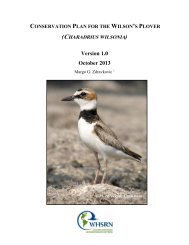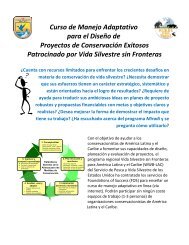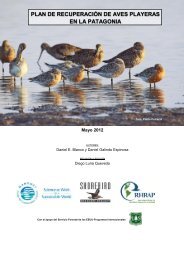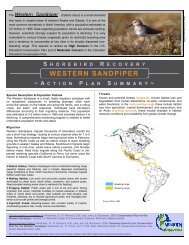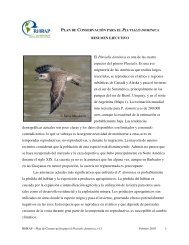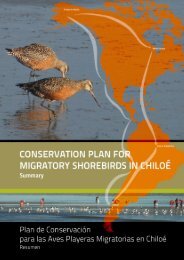Sanderling Plan - Western Hemisphere Shorebird Reserve Network
Sanderling Plan - Western Hemisphere Shorebird Reserve Network
Sanderling Plan - Western Hemisphere Shorebird Reserve Network
You also want an ePaper? Increase the reach of your titles
YUMPU automatically turns print PDFs into web optimized ePapers that Google loves.
, m, w = uncommon to fairly common, region within species range but occurs in low relative abundance to other<br />
regions;<br />
B, M, W = common or locally abundant; region important to the species;<br />
B, M, W = high concentrations, region extremely important to the species relative to the majority of other regions.<br />
b Area importance scores are defined as follows:<br />
1 = Does not occur in the area, or only unpredictable, irregular occurrence as a vagrant. Area is outside of<br />
expected range;<br />
2 = Rare occurrences. Area is within the expected range of the species, but it occurs at a low frequency. (In<br />
general, management for these species is not warranted within the region;<br />
3 = Uncommon to fairly common;<br />
4 = Common or locally abundant, with large numbers occurring or suspected to occur. Area of known or<br />
suspected importance relative to other regions, especially within the same flyway. The area is important to<br />
supporting hemispheric or regional populations;<br />
5 = High concentrations known to occur. Area of high importance to the species relative to the majority of other<br />
regions. The area is critical for supporting hemispheric populations of the species.<br />
WHSRN – <strong>Sanderling</strong> Conservation <strong>Plan</strong>, February 2010, v1.1 87





